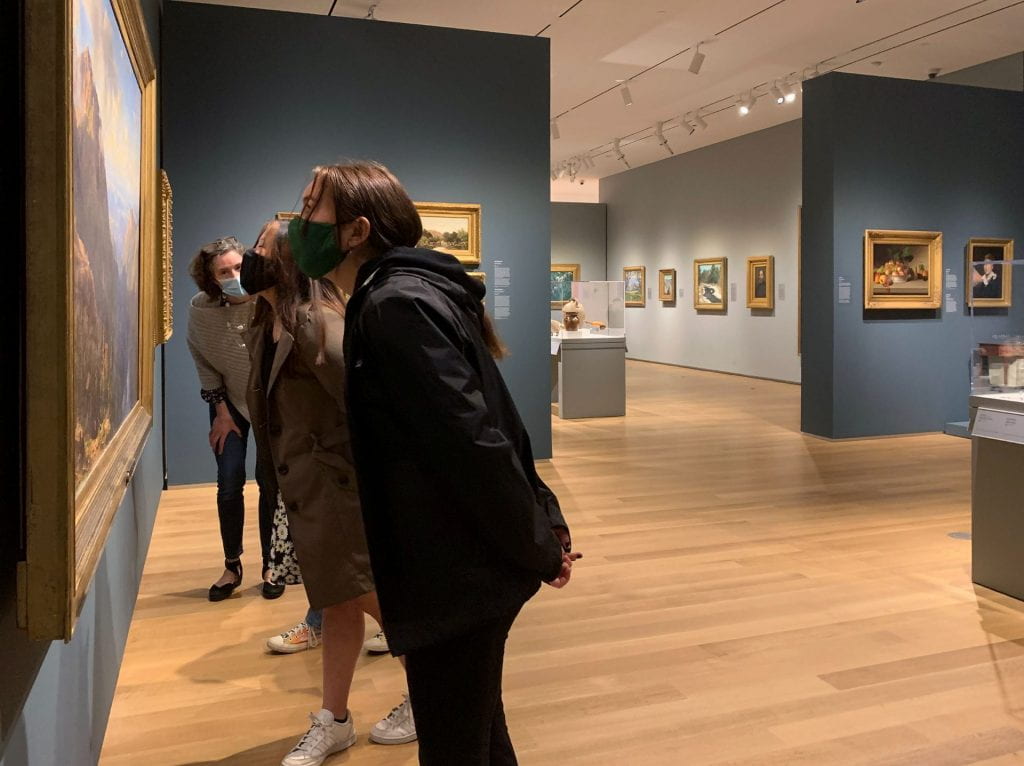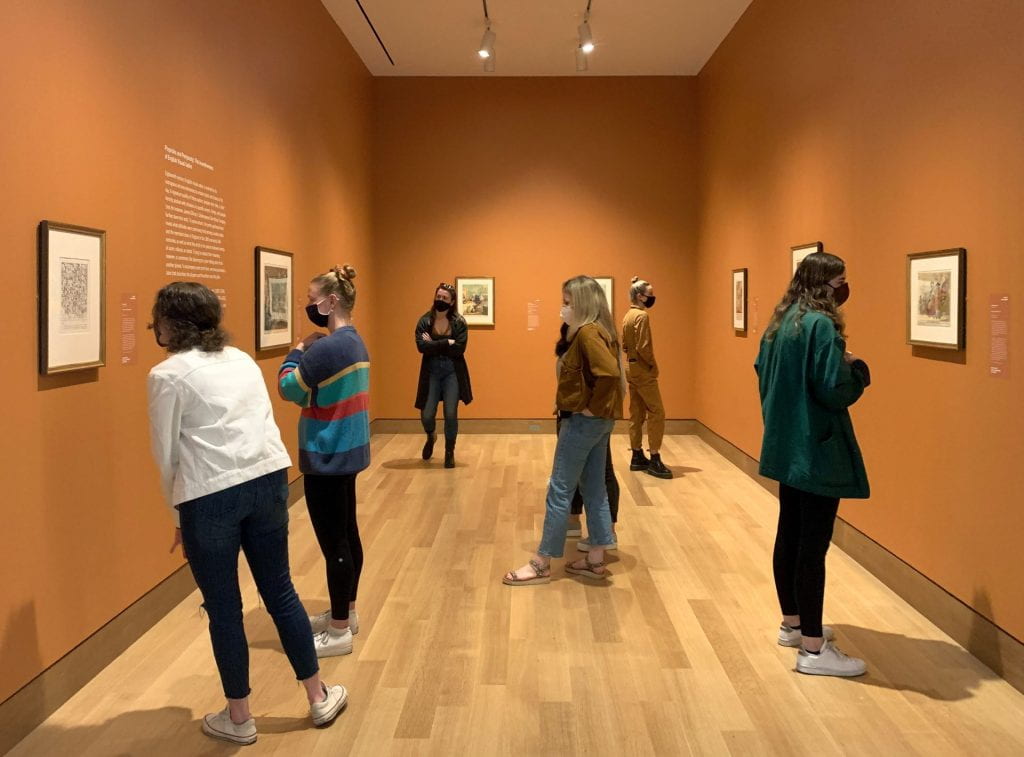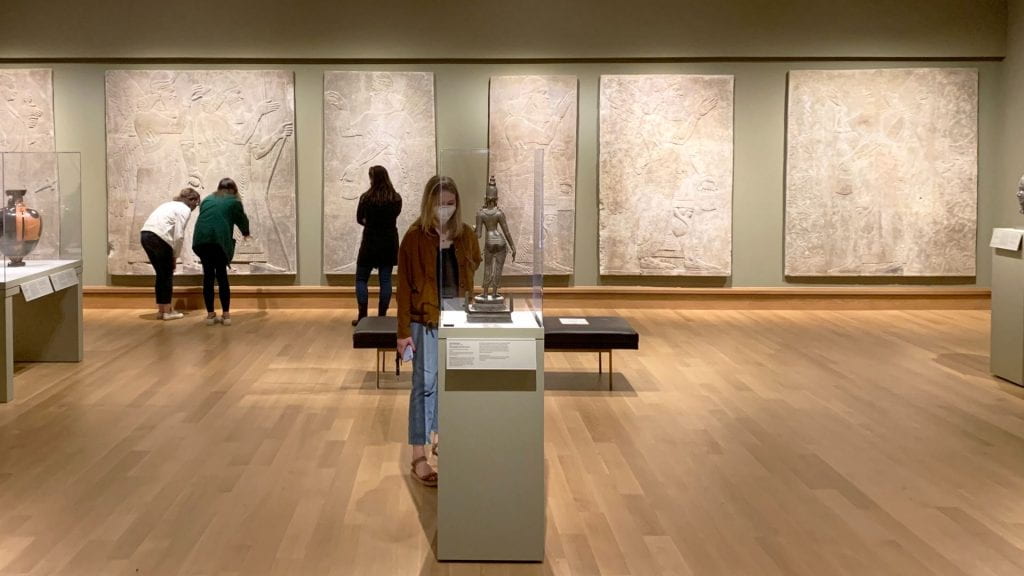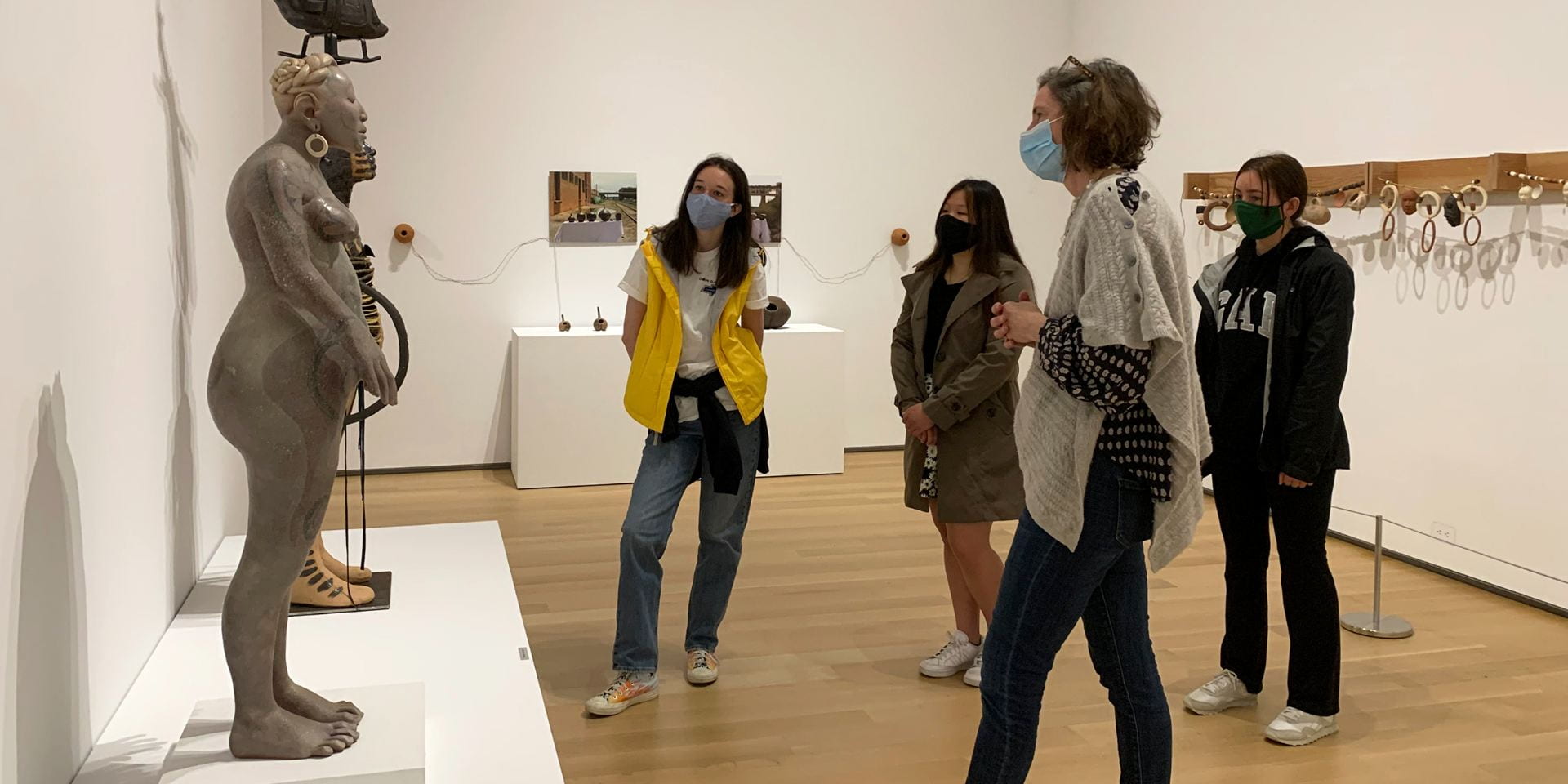The reinstatement of the privilege to gather in person, even in small groups, has felt like an enormous win. We felt this acutely when we welcomed campus back into the museum through Tiny Tours and Tiny Visits this winter and spring. They are exactly what they sound like: a handful of Dartmouth students or staff in either a facilitated Tiny Tour or an unstructured Tiny Visit.
As a museum educator, I love nothing more than to set up the conditions for our audiences to have meaningful engagement with each other, and with the art on view. Museum educators calibrate conversations to meet stated learning goals, and we tend to stuff our tours with scaffolded experiences designed to help our visitors think critically about works of art.

From the first Tiny Tours, it felt like a moment that necessitated a slightly different, more open approach to tours. Students signed up for all sorts of reasons. Some cited missing the collections. Some came to see the museum once more before graduating, and first years came, curious about what the Hood has to offer. And then there were the students who said they were just sick of zoom and wanted to enter real spaces with real people, to connect and get a little outside of themselves.
Art can be a social conduit. Play and social banter can play important roles in a tour. I remember the day a group of six students came in for a tour, but really, they were two groups of friends lumped together in a tour group. About twenty minutes in, I ditched my plan. Standing between two galleries, I invited everyone to first find a work of art to which they were drawn and then spend a few minutes with the work, alone in quiet contemplation. I then put them into friend pairs to introduce each other to their chosen works. Quiet, chatter, and laughter ensued. It was a small change in the tour, but it allowed them to do what they wanted to do in the first place: hang out together.

Early Tiny Tours also reminded me of the value of unstructured looking and the role of wandering in museum spaces with extended moments of quiet. Zoom teaching has its merits, but the transitions from looking at one work of art to the next are abrupt and leave little room for thoughts and responses to percolate. I had forgotten what it feels like to be a member of a group moving through galleries together, quietly absorbing an experience, building anticipation together, but separate. I had forgotten what it is like to climb the original Charles Moore stairs and take in the staged views of Lathrop, Jaffe, and Hall, seeing installations in relation to each other.
The liminal moments spent in transition between galleries creates space for people to wonder, and walking can decompress the intensity of a formal learning experience. Compelling questions and observations often came out of those silences when we traveled from one space to the next in our tiny groups together. In this year of isolation, together feels like the operative word. Before gathering in big groups became a regular thing again, it was a joy to step inside the Hood Museum once more, and wander, wonder, and talk about art in our Tiny Tours.

This post was authored by: Neely McNulty, Hood Foundation Associate Curator of Education
The Hood Museum of Art will reopen to all audiences on August 4! Visit our website for more information and new hours.

ABOUT THE AUTHOR
Prior to joining the Hood Museum of Art, Neely taught at Lesley University, worked as an art therapist, and oversaw all children’s art programming at the League of New Hampshire Craftsmen. Neely joined the Hood Museum in 2008 as the Images and ArtStart Instructor. She oversaw and taught the museum’s multiple-visit school programs for regional children. In 2017, she accepted the position of Hood Foundation Associate Curator of Education. Neely holds a Masters of Art Therapy from the School of the Art Institute of Chicago, and a B.A. from Princeton University. She is also a current member of the National Art Education Association.

Comments are closed.